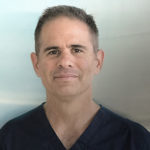It all Starts here
Mole Excision and Skin Cancer
Skin cancer is the most common form of cancer in the US, but it has a very high cure rate, making early detection very important. Mole excision and pathological testing can aid in early detection.
Click any of the links below to jump to that section:
What is Mole Excision?
Mole excision is removing a suspicious or confirmed cancerous mole. The techniques used during mole excision will depend on the size, location, and characteristics of the mole.
"I had my breast augmentation in '02 and have had 3 more children after and still looks amazing." Read More >
Who can Benefit from Mole Excision?
If you notice a suspicious mole that could be cancerous, it needs to be examined right away. Dr. Weider may recommend mole excision if you experience a mole that is:
- Irregular in border, color, or shape
- Larger than the size of a pencil eraser
- New or changing
Some patients are more at risk of skin cancer than others including those with a personal or family history of skin cancer, those with fair skin, and those who spend more time outdoors. Mole excision can be performed anywhere on the body, most commonly on the scalp, face, hands, and neck.
Mole Excision Surgery
Removing a mole involves the use of local anesthesia to numb the surrounding tissue before the mole and surrounding tissue are removed. For smaller moles, a simple closure can be performed. For a larger mole, a more complex repair may be necessary.
Aftercare for Mole Excision
After mole excision, you will be instructed to keep the area clean and covered with a bandage for a few days. You will be instructed to avoid ultraviolet rays for three to six months and to apply scar cream after the initial healing is complete. You can help protect yourself from skin cancer by avoiding overexposure to the sun, wearing the proper sunscreen, and avoiding tanning beds. If you notice new, changing, or otherwise suspicious moles, contact your dermatologist or physician right away for an examination.
Contact Weider Plastic Surgery
Dr. Weider is board certified by the American Board of Plastic Surgery and has a wealth of experience performing mole excision and skin cancer surgery. During your consultation, he will answer all of your questions and formulate an individualized plan. At Weider Plastic Surgery we are dedicated to ensuring that every patient’s visit to our office is a comfortable, educational and pleasurable one.
Dr. Weider, a native of Southern California, is a Board-Certified Plastic Surgeon who has maintained a private practice in Dallas, TX since 1999. After attending Stanford University, he obtained his medical degree (M.D.) from Baylor College of Medicine in Houston. He then completed a one year surgical internship in Los Angeles at Harbor-UCLA Medical Center, followed by a four year general surgery residency in Dallas at Methodist Medical Center, and a two year plastic surgery fellowship in Cleveland at Case Western Reserve University.







